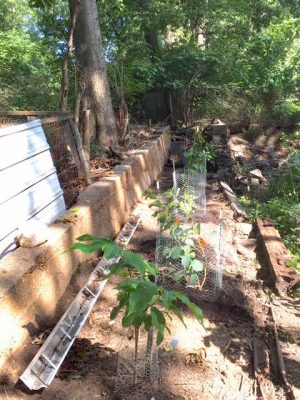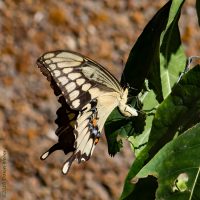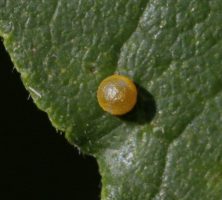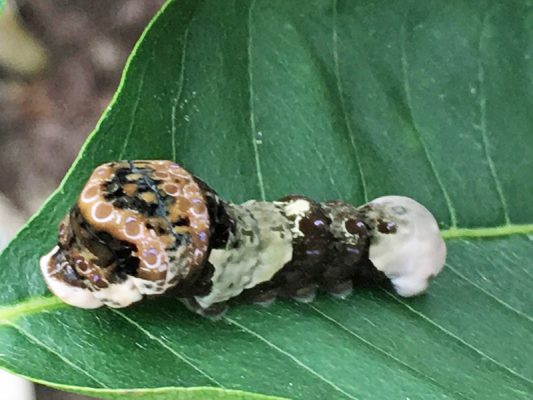[Editor’s Note: This story was posted originally on the Bring Conservation Home blog on September 19.]
By Dawn Weber
Board Member-at-Large, Wild Ones – St. Louis Chapter
On Sunday, September 18, I spent a few hours planting new trees and shrubs in an area that was previously covered in English ivy, wintercreeper, and bush honeysuckle. One of the trees was a wafer ash (Ptelea trifoliata), planted in hopes of providing habitat for the giant swallowtail butterflies. Wafer ash is one of the host plants for the giant swallowtail. I also planted small prickly ash trees (Zanthoxylum americanum) for the same reason.
When a plant is a butterfly’s host plant, it means that it is a plant (or THE plant, in some cases) that eggs can be laid on, that will provide food for the new caterpillars, which will become butterflies and continue on to repeat the cycle. By planting the host plant, we support the entire life cycle of the butterfly.
The prickly ash trees were planted a couple of years ago, and the overall native garden planted for three years, but I’d never seen a giant swallowtail butterfly.
The tree and shrub planting, as usual, took longer than expected, and I didn’t get any of my perennials planted. I took today off, in order to try to get them done. Some of these plants have been waiting since May…so no time like the present now that the weather is cooler!
There were a lot of butterflies in the yard this morning, but I was very excited when a giant swallowtail passed overhead and into the yard. She checked out the prickly ash, and I ran inside to get my camera! When I returned, she was taking note of the newly planted wafer ash. This young tree is about 4 ft tall, and has just a few leaves on it. Can such a small tree provide what the caterpillars need?
She thought so! I watched her lay an egg on my tiny tree and float off into the neighbors yard, and she returned several times repeating the process. When she left for a longer period and I was able to get closer, I easily found 3 eggs.
I know that we often say and hear “Build it and they will come”, but I couldn’t have had a more real life real time example than today. It was so special! That tree has been sitting behind my house for awhile, but was in the ground no more than 16 hrs and found by this lucky butterfly. The giant swallowtail female lays the brownish-orange egg on the surface of green leaves, so it was very easy to spot with the naked eye, no magnification required. I will be watching closely to see how they develop!
As of October 18, one caterpillar remained and was getting big.
What have you added to your yard this fall to build habitat for butterflies?
Note: Check with Missouri Wildflowers Nursery and Forrest Keeling on availability of wafer ash (also called hop tree), and Missouri Wildflowers Nursery on availability of prickly ash. Both species are available at times from these sources, but not as readily as some more common species.






Inspiring. Thanks
So glad we had this butterfly in our neighborhood.
Great story – in words and photos! Thanks for sharing.
Wonderful story. I started planting more shrubs and small trees a few years ago, hoping to provide berries for the birds in a few years. But I almost immediately started observing a larger variety of birds. I’m guessing the lepidoptera larvae these woodies feed are already feeding the birds!
thank you for being so observant (and sharing your good luck at the sighting!)…Mother Nature is truly magnificent,and when we humans pay attention we can assist the cycles of life to flourish – your experience is inspiring.